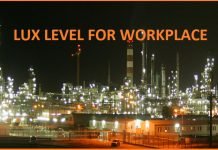Prevention and Control of Pollution Act 1981 “CPCB”
This Act (No. 14 of 1981) was enacted on 29-3-1981. It came into force from 16-5-1981. It extends to the whole of India. It has 7 chapters and 54 sections. cpcb
It was amended in 1987.
Chapter-I gives the following definitions (S 1 and 2):
Air pollutant means any solid, liquid or gaseous substance including noise present in the atmosphere in such concentration as to injurious to human beings, other living creature, plants, property or environment,
Air pollution means the presence of any air pollutant in the atmosphere.
Approved appliances mean any equipment or gadget used for the ringing of any combustible material or for generating or consuming any fume, gas or particulate matter and approved by the State Board for the purpose of this Act.
Chimney includes any structure with an opening or outlet from or through which any air pollutant may be emitted.
Control equipment means any apparatus, device, equipment or system to control the quality and manner of emission of any air pollutant and includes any device used for securing the efficient operation of any industrial plant.
Emission means any solid, liquid or gaseous substance coming out of any chimney, duct or flue or any other outlet.

Industrial plant means any plant used for any industrial or trade purpose and emitting any air pollutant into the atmosphere.
The words ‘approved fuel’ and ‘automobile’ is also defined. Other chapters are as under
Chapter – II : Central & State Board (S. 3 to 15).
Chapter – III : Power & functions of Boards (S. 16 to 18)
Chapter – IV : Prevention & Control of Air pollution (S. 19 to 31A)
Miscellaneous including rulemaking powers of the Central and State Govt. (S. 47 to 54). Functions of the central and State Pollution Control, Board are given in
Chapter III. Some provisions of
Chapter – IV are as under
The State Government may after consultation with the State Pollution Control Board, notify any area as air pollution control area for the purposes of this Act, prohibit the use of any polluting fuel in any area, require use of an approved appliance, prohibit burning of any polluting material in any area (S. 19) and instruct the motor vehicles authority to ensure compliance of the standards of automobiles emission laid down by the State Board (S. 20). CPCB
No industrial plant shall be established operated without the previous consent of the State Board. An application for consent should be in a prescribed form. The State Board can grant or refuse within 4 months or cancel any existing consent or refuse further consent after expiry if the conditions are not fulfilled. Every person getting consent has to comply with the following conditions. CPCB
- The control equipment approved by the State Board, should be installed and operated.
- Chimny, approved by the State Board shall be erected or re-erected.
- Such other conditions as the State Board may specify.
- The conditions should be fulfilled within a stipulated time.
Due to any technological improvement or otherwise, the State Board can vary its conditions. if the consent is transferred to another person, the transferee will be responsible for compliance (S. 21). CPCB
Standards laid down by the State Board shall not be exceeded (S. 22). The Board has the power to approach the court for restraining persons from causing air pollution. The court can direct that person to stop pollution or authorize the Board to implement the direction at the cost of that person (S. 22A). CPCB
An accident, unforeseen act or event of unforeseen beyond the prescribed standard shall be forthwith intimated to the State Board and to the prescribed authorities, who shall take, as early as practicable, remedial measures to mitigate that emission at the cost of the persons concerned (S. 23). CPCB
Board officers have the power of entry and inspection to check conditions, control equipment, industrial plant, record, register, document, material etc. (S. 4) and can call for any information regarding types of aid level of emission and any compliance necessary (S. 25), can take samples of air or emission. In the manner prescribed and can send the sample to the laboratory for analysis (S. 26). The Board analyst shall submit the report of analysis in triplicate to the Board, of which one copy will be sent to the, occupier by the Board (S. 27).
The State Government can establish one more State Air Laboratories (S. 28) and can appoint analysts (Govt. analyst). The Board can also appoint analysts (Board analysts) (S. 29) whose report can b used as evidence in any proceeding under this Act (S. 30).
An aggrieved person can appeal within 30 days to the prescribed authority (S. 31). Central or State Board has the power to give directions to any person, officer or authority who shall comply with such directions. Such power includes the power to direct closure, prohibition or regulation of any industry, operation or process or the stoppage or regulation of supply of electricity, water or any other service (S. 31A).
Prevention and Control of Pollution Rules 1982
The Central Government u/s 53 of the Air Act made these rules effective from 18-11-1982. They have 7 chapters, 17 rules, 3 schedules, and 9 forms.
Chapter – I. Preliminary (R. 1, 2).
Chapter – II. Procedure for the Board and its committees (R. 3 to 11).
Chapter – III. Allowances to a committee member to attend the meeting (R. 12).
Chapter – IV. Temporary association of persons with the Central Board (R. 13, 14).
Chapter – V. Budget of the Central Board (R. 15).
Chapter – VI. Annual Report of the Central Board (R. 16)
Chapter – VII. The account of the Central Board (R. 17).
Thank for visit rlshumancare.com and reading Prevention and Control of Pollution Act 1981. CPCB





